Field mice and house mice can appear very similar at first glance. However, there are some key differences separating these two rodents from one another. For example, house mice are from the Muridae family, while field mice are from the Cricetidae family, a very different classification of rodents– though it may not seem like it.
But what other differences might these two rodents share, and how can you learn to tell the differences between them? In this article, we will compare field mice vs house mice, including how they appear differently as well as how they behave differently. You may want to learn how to tell the difference for the future- let’s get started.
Comparing a Field Mouse vs House Mouse
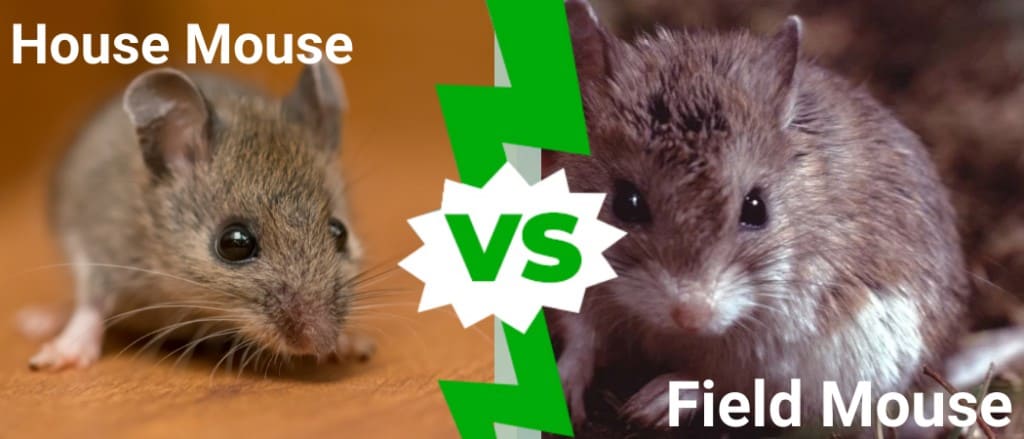
| Field Mouse | House Mouse |
|---|---|
| Size 5-7 inches | 3-5 inches |
| Appearance Brown, orange, or gray top coat; white belly and feet | All brown with dark feet; large ears and eyes |
| Lifespan 2-4 years in the wild | 1-2 years in the wild |
| Tail Hairless, two different colors, shorter | Hairy, longer, one uniform color |
| Habitat Fields, meadows, wild areas | Urban areas and parks, homes, and properties |
| Behavior Climbers and hoarders; shy | Jumpers and opportunistic eaters |
The Main Differences Between Field Mouse vs House Mouse
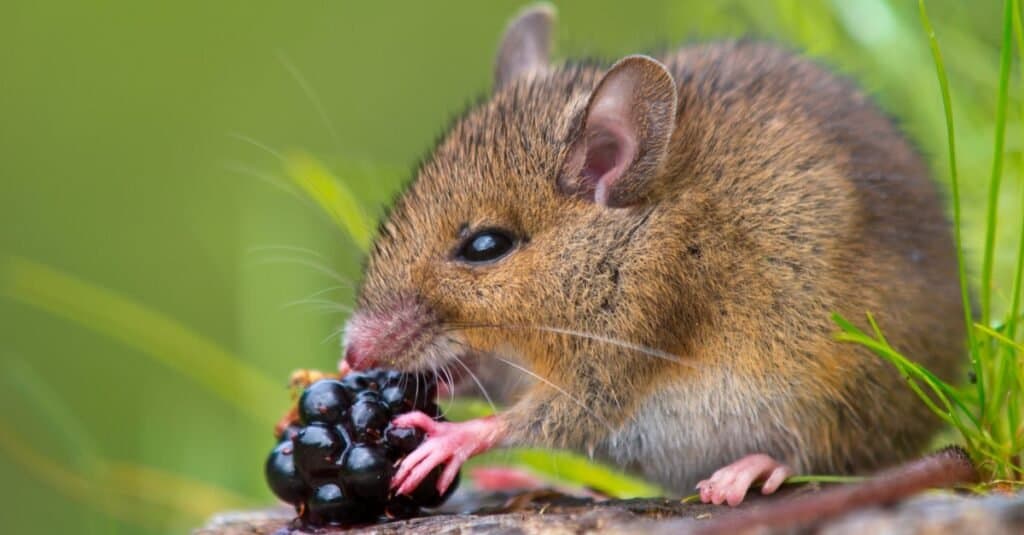
A house mouse also has larger ears, eyes, and a longer tail when compared to a field mouse, and field mouse tails don’t have hair.
©Rudmer Zwerver/Shutterstock.com
There are key differences between a field mouse and vs house mouse. Field mice have a brown or gray coat with a white underbelly, while house mice always have just one single solid color throughout their bodies. A house mouse also has larger ears, eyes, and a longer tail when compared to a field mouse, and field mouse tails don’t have hair. Both field mice and house mice exhibit different behaviors from one another as well, including their preferred habitats.
But this is just the beginning of our discussion regarding their key differences. Let’s dive in and learn more about these rodents and how they differ from one another in more detail.
Field Mouse vs House Mouse: Appearance

House mice have one uniform color.
©MainelyPhotos/Shutterstock.com
One key difference between a field mouse vs house mouse can be found in their overall appearance. Field mice consist of two separate colors on their coat, usually a dark brown or gray upper coat with a white underbelly, while house mice are one solid color overall. This is only one of their primary physical differences.
Field mice have significantly smaller ears than house mice do, while house mice have the trademark large mouse ears and large eyes. While it can be difficult to tell this difference unless you are comparing the two creatures side by side, a field mouse’s ears will be much closer to its head, given its overall size. Field mice will also have white or light tan feet to match their underbelly, while house mouse feet will be darker in color.

Field mice are found in less populated areas, such as fields, woodlands, and meadows, while house mice prefer more urban areas such as backyards, parks, and even indoor areas.
©Liz Weber/Shutterstock.com
Field Mouse vs House Mouse: Habitat
Another key difference between field mice and house mice lies in their preferred habitats. Field mice are found in less populated areas, such as fields, woodlands, and meadows, while house mice prefer more urban areas such as backyards, parks, and even indoor areas. This is likely due to a house mouse’s opportunistic feeding nature, while field mice are more likely to forage for food in the wild- house mice will seek out food from humans frequently.
Field Mouse vs House Mouse: Size
The size difference between a field mouse vs house mouse is another key feature to pay attention to. A field mouse is always larger than a house mouse, though you may not be able to tell this difference right away. A house mouse grows to an average of 3-5 inches, while a field mouse can reach over 7 inches in length.
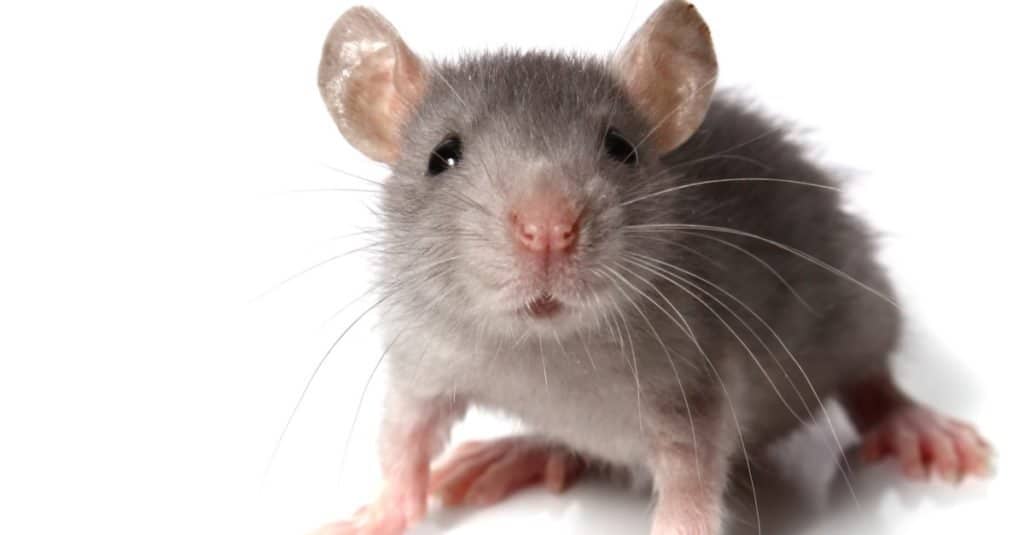
A house mouse grows to an average of 3-5 inches, while a field mouse can reach over 7 inches in length.
©kontur-vid/Shutterstock.com
Field Mouse vs House Mouse: Tail
Another crucial difference between field mice and house mice is found in their tails, both length and hair amount. Field mice tails have a darker color atop their tails, with a lighter underbelly; house mice have tails with the same uniform color from top to bottom. This can be an easy way to tell them apart, especially if you notice the amount of hair on the tail as well.
For example, field mice have completely hairless tails, making their two-toned tails a bit more obvious. House mice have extra long tails that are covered in fine hairs, but you may have to get pretty close to a house mouse in order to find this fact out.

Field mice tails have a darker color atop their tails, with a lighter underbelly; house mice have tails with the same uniform color from top to bottom.
©Roger McLassus / CC BY-SA 3.0, from Wikimedia Commons, the free media repository – License
Field Mouse vs House Mouse: Behavior
A final key difference between a field mouse vs house mouse can be found in their overall behavior. House mice are opportunistic eaters, consuming any food that they come across (including the food in your cupboards!), while field mice prefer to hoard their food near their nest or another safe location. This is a significant behavioral difference between these species, though it may not be evident at first.
When it comes to escaping, there is another key difference between field mice and house mice: house mice are efficient jumpers, while field mice are far better at climbing. You may not get to see this behavior firsthand, as either type of rodent will scurry away from you. However, their different athletic abilities have something to do with their individual species.
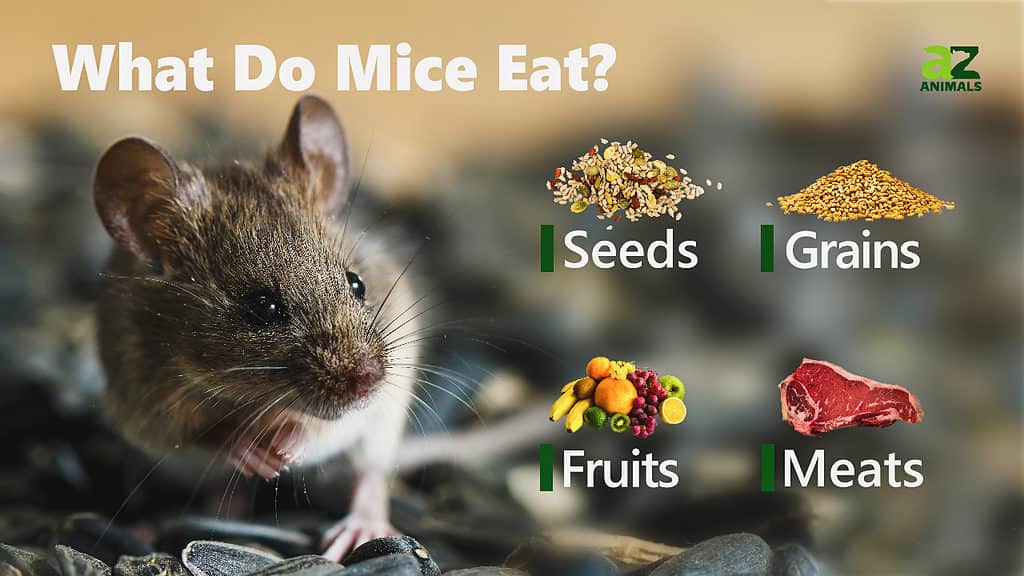
What do Mice Eat in the Wild?
Both field mice and house mice eat whatever is available – for field mice the choices are more limited to seeds, grains, wild fruits, and insects. House mice like whatever they can find around a house – like human garbage, bird food, pet food, and insects. Mice near farms will eat crops and all fruit trees will offer a mouse a feast. If they like your garbage a lot – they might decide to move into your house and partake in your pantry. They will eat anything from bread to cereal!
Unfortunately, when times get tough, mice will eat each other. Usually, this means that an adult mouse will eat the young – even their own babies.
Bonus: How Can I Keep Mice Out of My House?
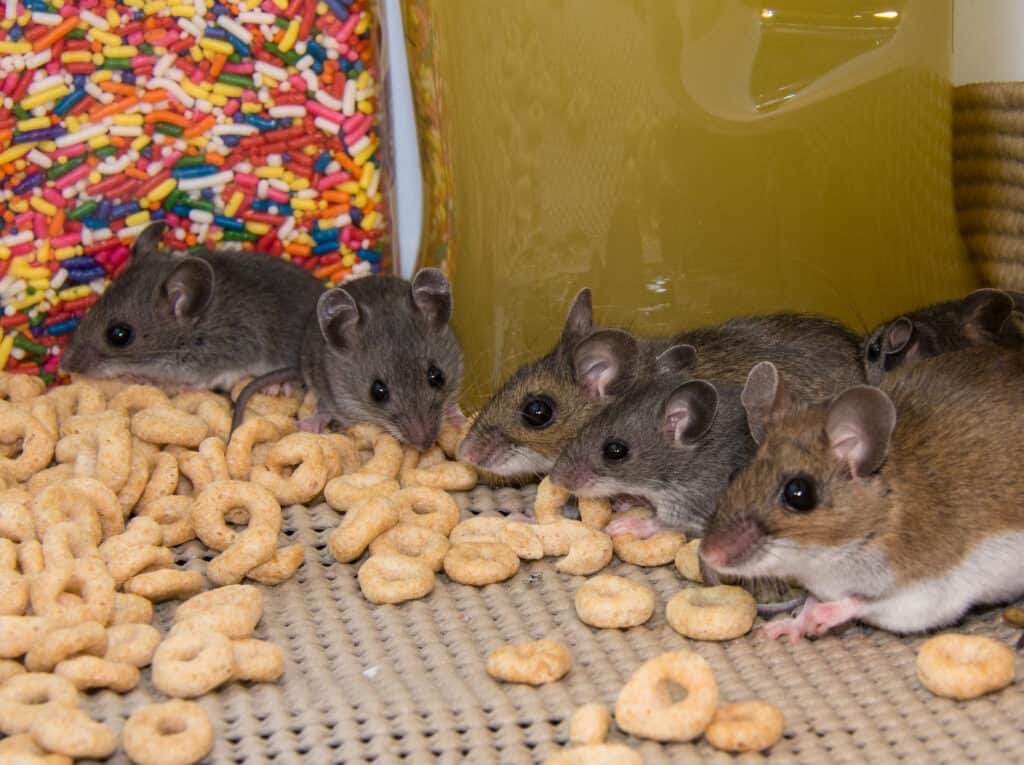
Mouse infestations are stressful and unhealthy.
©Landshark1/Shutterstock.com
If the image above horrifies you – we can help! Having a mouse in the house is not only stressful – it is unhealthy. Mice can spread diseases to humans through urine, feces, saliva, and ticks. Keep mice from getting into your house in the first place so infestation will never be a problem by following these steps:
- Seal off entry points. Use 100% silicone caulk to seal narrow gaps. Holes that are larger than 1/2 inch wide should be stuffed with steel wool to prevent mice from chewing through – and then sealed with joint compound. Pay close attention to basement foundations and where pipes enter the house.
- Attach door sweeps to the bottom of the outside facing doors. They will keep mice and insects from coming in underneath the door.
- Prune branches from your house. Mice will use them as bridges to your roof.
- Make sure wood piles are at least 20 feet from your house. Mice, termites, carpenter ants, snakes, and more are attracted to wood piles.
- Keep your kitchen clean. Use airtight food storage containers and keep cabinets and counters clean. Throw away or recycle paper products and cardboard.
- Make sure your garbage can has a tight lid. Clean the cans regularly inside and out to prevent mice-attracting smells.
- Consider using essential oils. They won’t get rid of mice once they are in – but the smell of peppermint and clove oil repels mice.
- Get a cat. Mice will not enter if they smell pheromones from cat urine. Add a dog to the mix and mice won’t even entertain the thought of coming into your house. Of course, this is no reason to adopt a cat – but it certainly is one of the many benefits.
The photo featured at the top of this post is © MainelyPhotos/Shutterstock.com
Thank you for reading! Have some feedback for us? Contact the AZ Animals editorial team.







